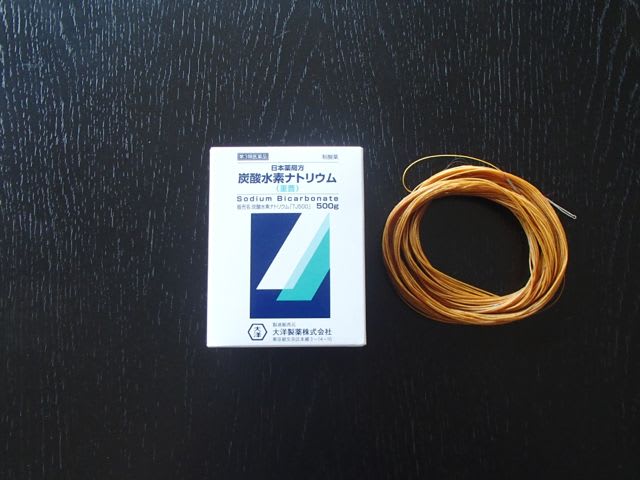The vacuum coating of a silk fly line with boiled linseed oil is very simple and easy, if you have a vacuum container. The most difficult and puzzling part a la F.M. Halford's method to coat silk fly lines was "to place it in an oven, heated to the temperature of 150 Fahrenheit, and bake it for about 10 hours". Ever since I read Halford's work, more than 17 years ago, I could not find a solution to realize this baking process at home, an apartment in Tokyo, until last year I found out the recipe with the buzz words "150 Fahrenheit" and "10 hours" can be easily worked out at any Japanese household.


A rice cooker will do the magic for you.
Fahrenheit 150 equals Celsius 66. And usual Japanese rice cookers keep the cooked rice with around this temperature for better taste after cooking it. Thus I wound the impregnated silk fly line around a piece of carton box made triangle and placed it in a rice cooker during a night around 10 hours, and let it be cooled during daytime while went to work.

The result was amazing. Just as described in the 19th century book, the linseed oil was completely dry and hardened.

Just like that.

After 4 times of coating, that means 4 days since the start of the coating work, the silk fly line got significant weight and coating. But due to the triangle frame, it became edgy at many part of it.

So from 6th coating, I replaced the triangle with a new weapon, fit in my small rice cooker.

The line treated with the 7th coating.

Edgy parts gradually disappear and coating and weight grew a bit.

The pure silk's pale colour became amber by the dried linseed oil.

After 10th application and finished whole process, I went to fishing to try the quality of the silk fly line, once a Phoenix Silk Fly Line of 6 weight.

I do not know what ingredient is used in the coating of a Phoenix line, but it must have contained other ones than pure linseed oil. The thickness of the line reduced somehow and the weight should not be 6 anymore. It loaded my Hardy Palakona Phantom 9' nicely from 10 yards on, so probably it has now around 5 weight.
With a smear of red tin Mucilin, it floats marvelously, and some hardness felt at first disappeared after several fishing.
There are many articles in the net how to coat, restore silk fly lines, many of them recommends a substance made linseed oil and varnish mixture. Varnish, maybe, is recommended for quick dry and grossy coat of the line. But it does harm the line becoming sticky once it is exposed to summer heat, just like my case.
A rice cooker makes the original recipe of silk line coating very handy and easy. I wish all the DIY silk fly line admirers GOOD LUCK!


A rice cooker will do the magic for you.
Fahrenheit 150 equals Celsius 66. And usual Japanese rice cookers keep the cooked rice with around this temperature for better taste after cooking it. Thus I wound the impregnated silk fly line around a piece of carton box made triangle and placed it in a rice cooker during a night around 10 hours, and let it be cooled during daytime while went to work.

The result was amazing. Just as described in the 19th century book, the linseed oil was completely dry and hardened.

Just like that.

After 4 times of coating, that means 4 days since the start of the coating work, the silk fly line got significant weight and coating. But due to the triangle frame, it became edgy at many part of it.

So from 6th coating, I replaced the triangle with a new weapon, fit in my small rice cooker.

The line treated with the 7th coating.

Edgy parts gradually disappear and coating and weight grew a bit.

The pure silk's pale colour became amber by the dried linseed oil.

After 10th application and finished whole process, I went to fishing to try the quality of the silk fly line, once a Phoenix Silk Fly Line of 6 weight.

I do not know what ingredient is used in the coating of a Phoenix line, but it must have contained other ones than pure linseed oil. The thickness of the line reduced somehow and the weight should not be 6 anymore. It loaded my Hardy Palakona Phantom 9' nicely from 10 yards on, so probably it has now around 5 weight.
With a smear of red tin Mucilin, it floats marvelously, and some hardness felt at first disappeared after several fishing.
There are many articles in the net how to coat, restore silk fly lines, many of them recommends a substance made linseed oil and varnish mixture. Varnish, maybe, is recommended for quick dry and grossy coat of the line. But it does harm the line becoming sticky once it is exposed to summer heat, just like my case.
A rice cooker makes the original recipe of silk line coating very handy and easy. I wish all the DIY silk fly line admirers GOOD LUCK!






























